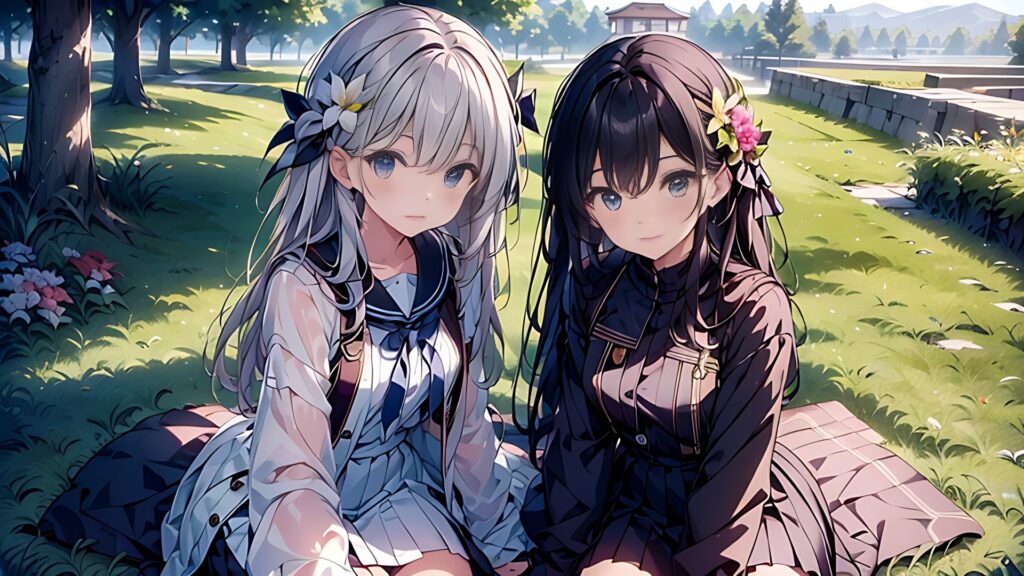Anime is a diverse medium, covering a wide array of themes, genres, and artistic styles that appeal to viewers worldwide. One aspect that has been both controversial and captivating within the fandom is the portrayal of “chounyuu” (超乳), which literally translates to “super breasts.”
In this article, we will explore the appeal of chounyuu in anime, its impact on the fandom, and the broader cultural significance of this phenomenon. Whether you’re a long-time anime enthusiast or simply curious about this particular trope, understanding the role of chounyuu offers a unique glimpse into anime’s evolving relationship with fan service, gender portrayals, and artistic freedom.
What is Chounyuu in Anime?
Chounyuu refers to anime characters who are designed with disproportionately large breasts. These characters are typically found in genres that emphasize fan service, such as ecchi, harem, and slice of life series. In many cases, their body design is exaggerated to the point where it challenges the boundaries of realism, leading to discussions about the purpose and implications of such depictions.
The portrayal of chounyuu often goes beyond just visual design, influencing how characters are written, interact with others, and contribute to the narrative.
Why Chounyuu Appeals to Anime Fans
The appeal of chounyuu in anime can be attributed to several factors, including:
1. Fan Service and Visual Spectacle
Anime often incorporates fan service — elements designed to please and excite the viewer. Chounyuu, as an exaggerated portrayal of the female body, fits this mold by catering to specific audience desires. For some viewers, the visual spectacle of chounyuu characters can be a form of escapism, offering a fantasy that diverges from everyday reality.
2. Comedy and Exaggeration
In many ecchi and harem series, chounyuu characters are often used as comedic devices. Their exaggerated proportions lend themselves to physical comedy, with situations involving clumsiness, misunderstandings, or awkward moments. These comedic scenarios often create tension, leading to humorous or embarrassing interactions with other characters.
3. Cultural Aesthetics of Anime
Japanese anime has long embraced unique and stylized portrayals of human figures. Exaggeration is common in anime, from larger-than-life mecha robots to characters with spiky hair or impossible fighting abilities. Chounyuu is an extension of this aesthetic, playing with the human form to create visually striking characters that stand out. For some fans, this exaggerated art style is a core part of why they enjoy anime, as it allows for artistic freedom and creativity that diverges from realism.
The Impact of Chounyuu on Fandom
Chounyuu has a mixed reception within the anime community. While some fans enjoy it as part of the fan service genre, others critique it for reinforcing problematic depictions of women. Here are some of the key ways chounyuu has impacted anime fandom:
1. A Divisive Trope
One of the most significant impacts of chounyuu is how it divides opinions within the fandom. On one hand, some anime fans appreciate characters for their aesthetic appeal and the entertainment value they bring to certain genres. On the other hand, critics argue that these depictions are objectifying, reducing female characters to little more than visual spectacles rather than complex individuals.
2. Memes and Online Discussions
Chounyuu characters have become a staple in anime meme culture. Often, their exaggerated designs lead to humorous takes or light-hearted mockery in fan forums. Memes featuring chounyuu characters often highlight the absurdity of their proportions, with fans poking fun at how far some series are willing to go to include over-the-top fan service.
3. Shifting Standards in Character Design
As anime evolves, so do character designs. While chounyuu was once a common trope in ecchi and harem anime of the 2000s and early 2010s, recent trends in anime suggest a shift toward more balanced and varied representations of female characters. Some newer series still include chounyuu characters, but there’s a growing demand for character designs that feel more realistic and multidimensional.
4. Fandom Segmentation
Chounyuu contributes to the segmentation of the anime fandom, with certain shows attracting niche audiences based on their use of fan service. Fans of chounyuu-heavy series may feel a strong sense of community with others who appreciate this aspect, while those who prefer more grounded anime may gravitate away from these genres. This segmentation allows for diverse fan experiences, but it also raises questions about the broader appeal of anime as an inclusive medium.
Chounyuu Characters: Notable Examples in Anime
Many anime series have made characters central to their storylines. Some notable examples include:
- Rias Gremory from High School DxD: One of the most popular characters, Rias is both a seductive figure and a powerful demoness, making her a fan favorite for her dual role as both eye-candy and a strong leader.
- Nami from One Piece: As one of the leading women in one of the world’s most popular anime, Nami’s design has evolved over the years to include chounyuu proportions, particularly in more recent arcs. Fans have noticed this shift, often discussing how it reflects broader trends in anime character design.
Conclusion:
Chounyuu in anime remains a complex and multifaceted phenomenon. While it certainly appeals to specific segments of the anime fandom, it also sparks debates about the portrayal of women, the use of fan service, and the direction of character design in anime. Whether you love it or hate it, there’s no denying that chounyuu has left a lasting impact on anime and its global fanbase.







